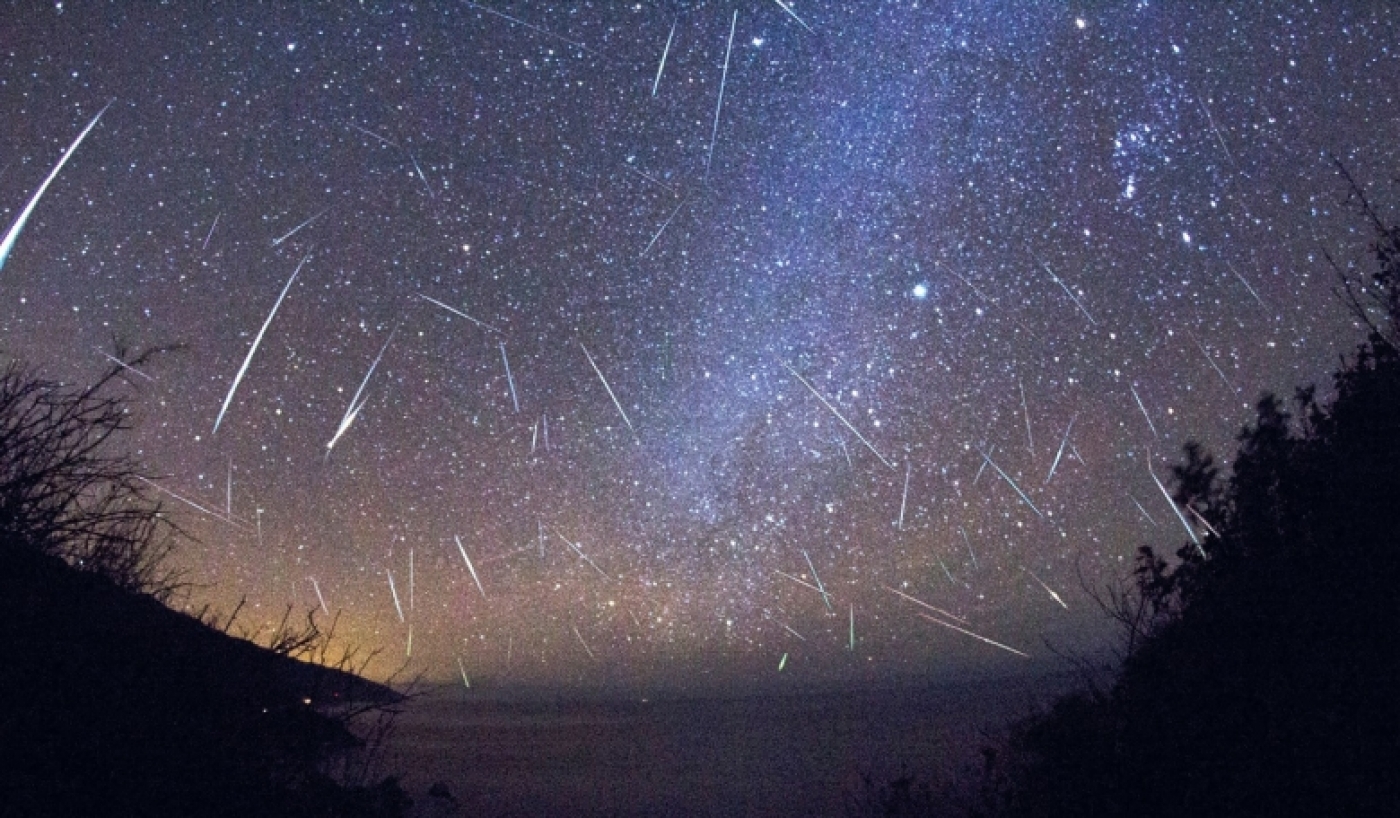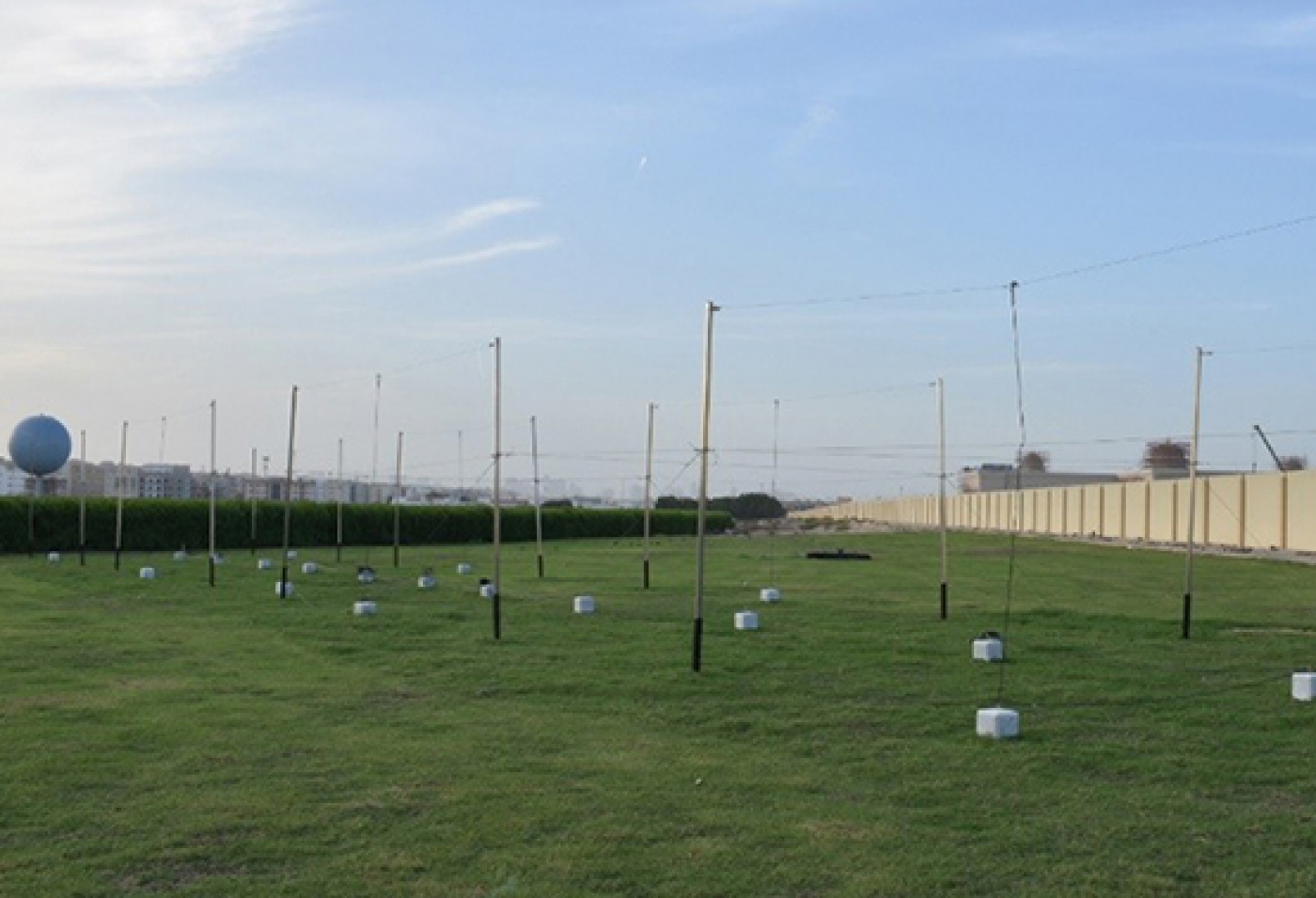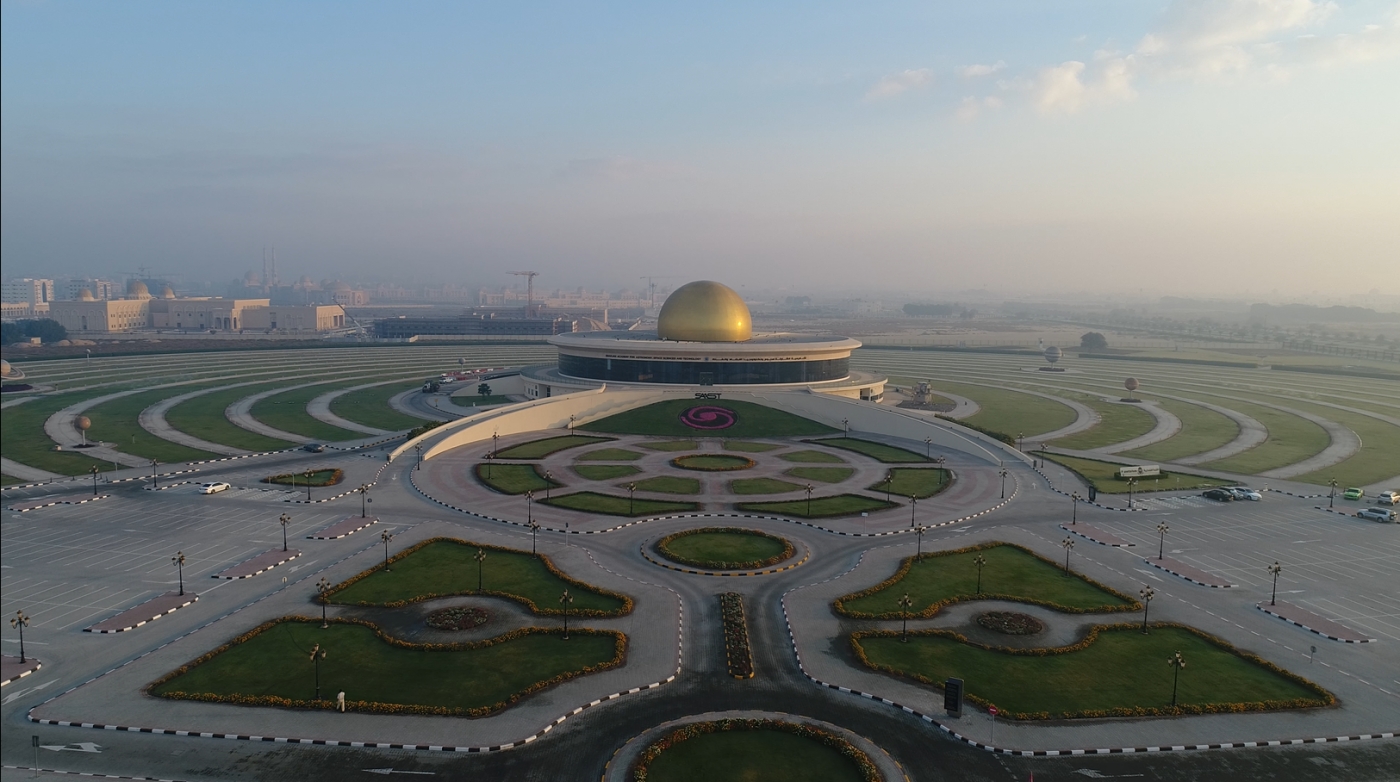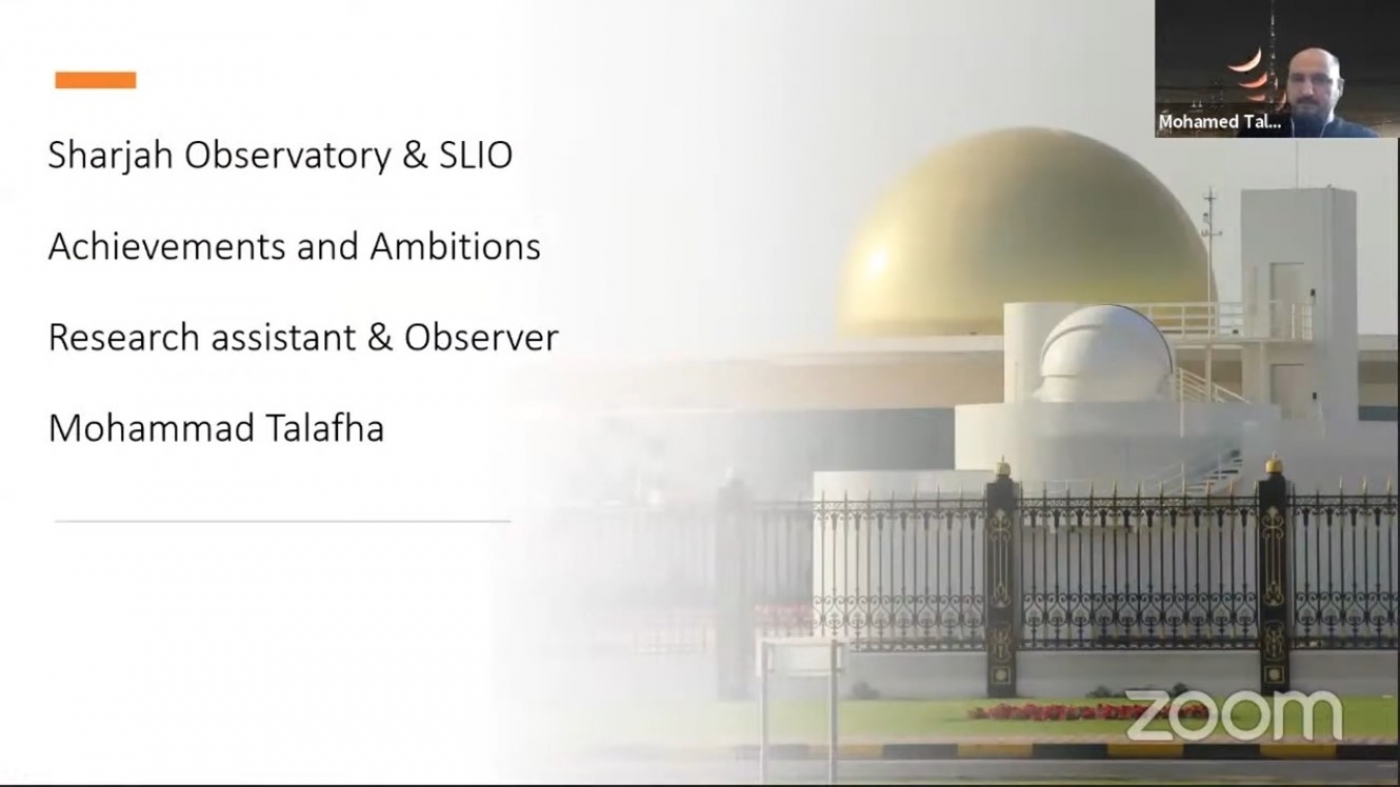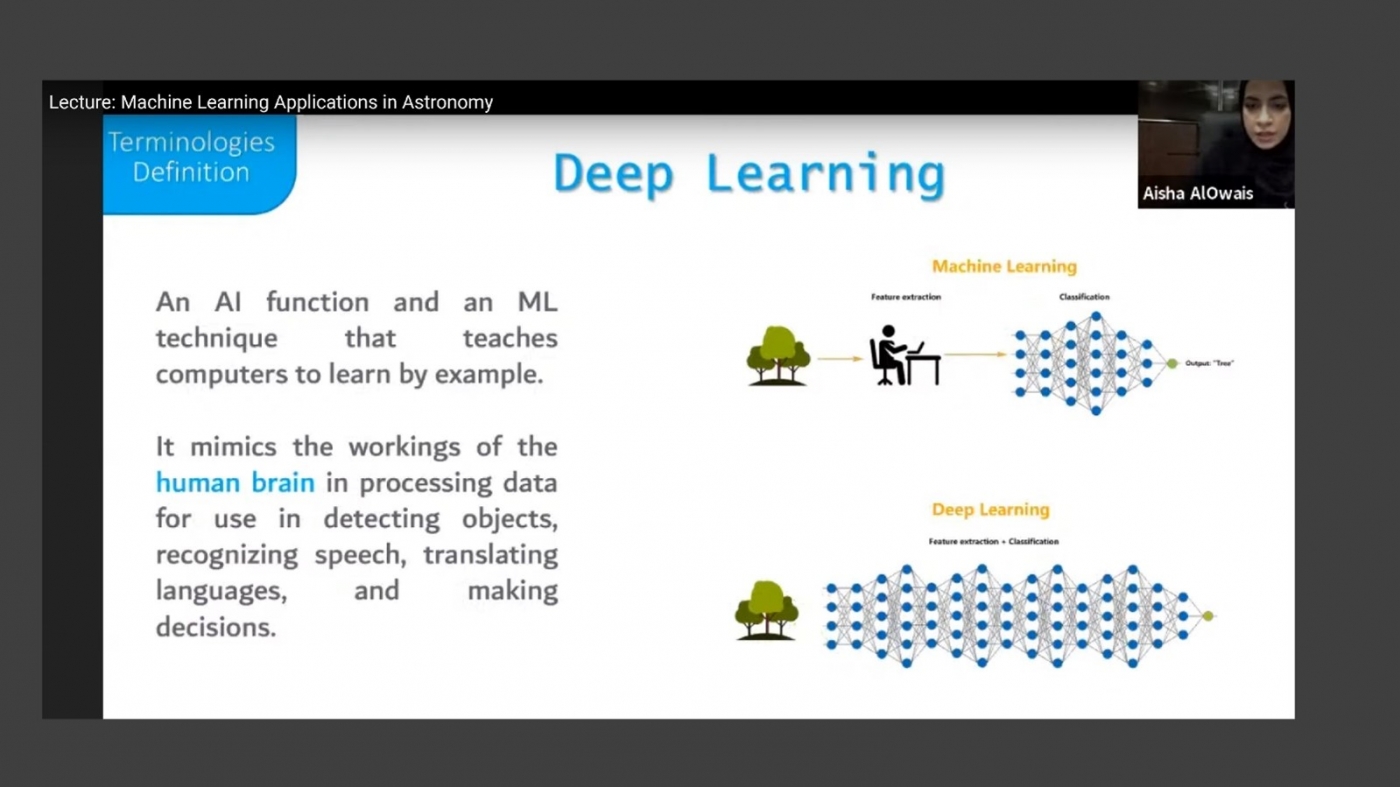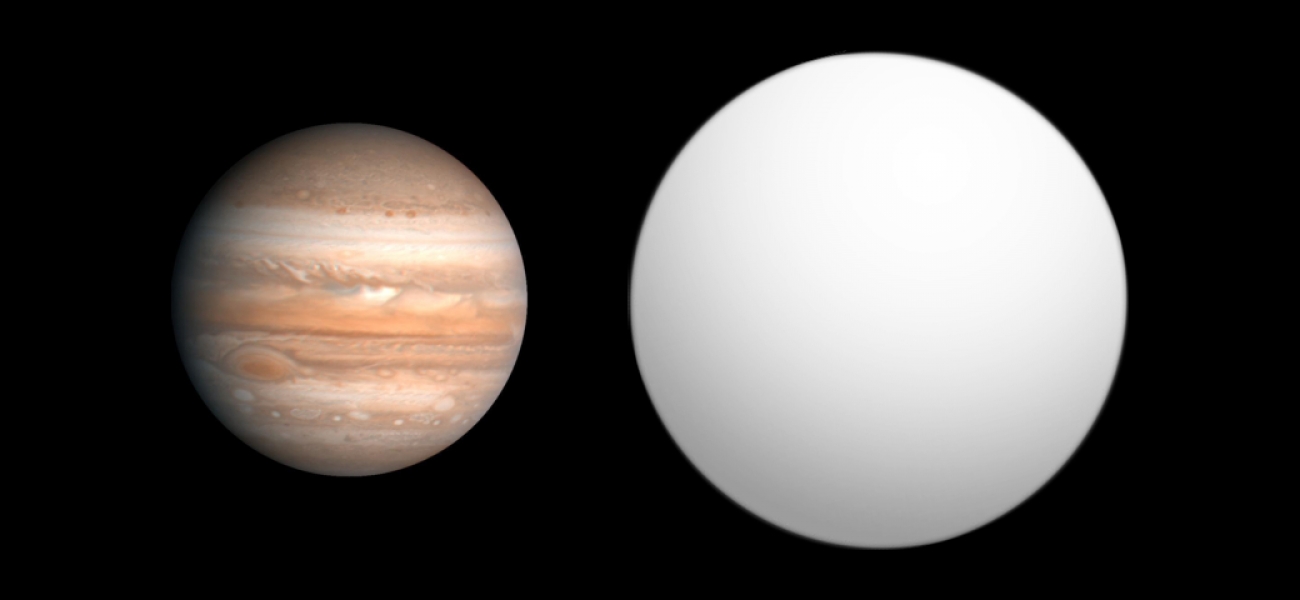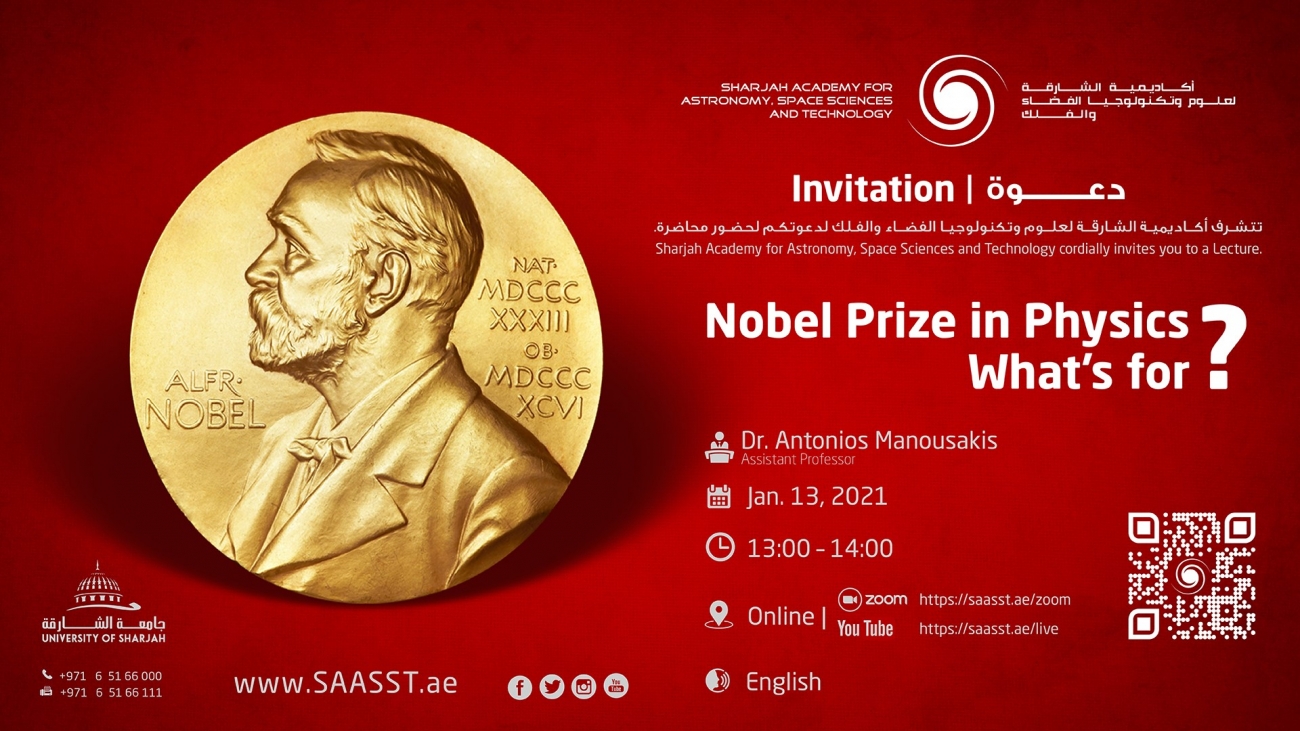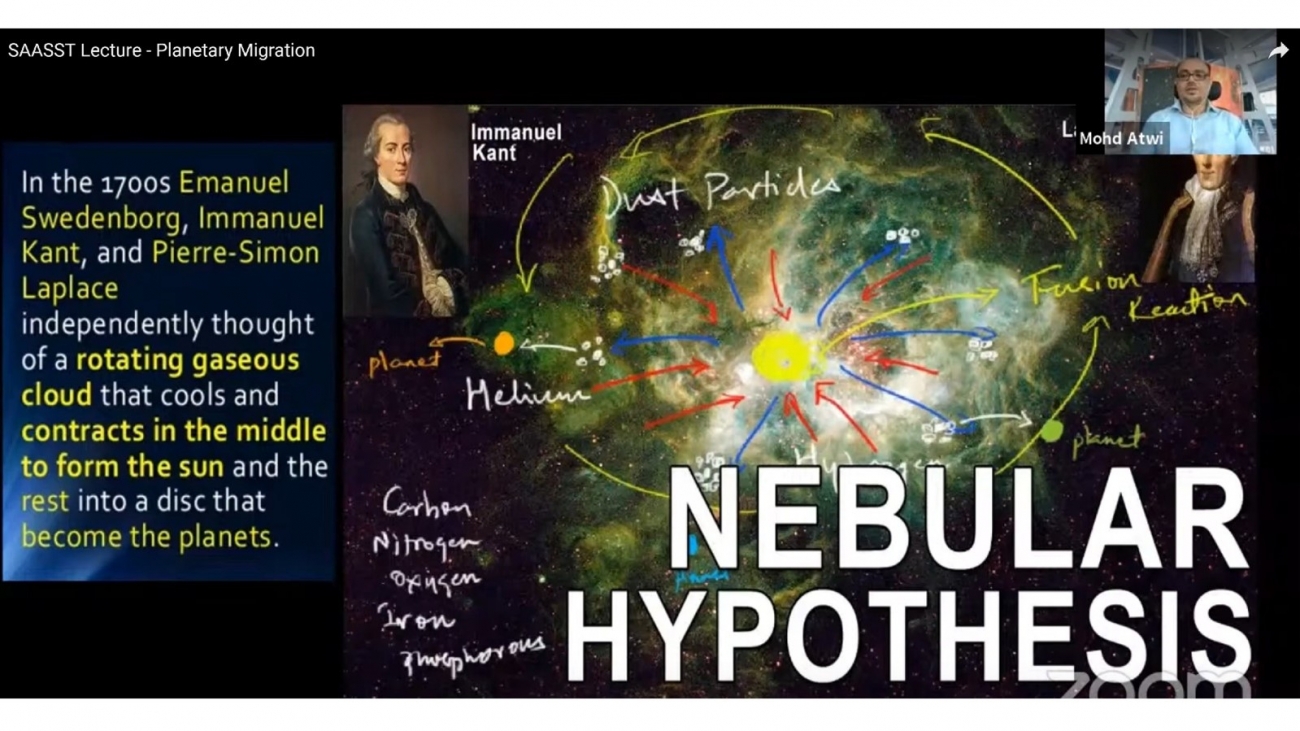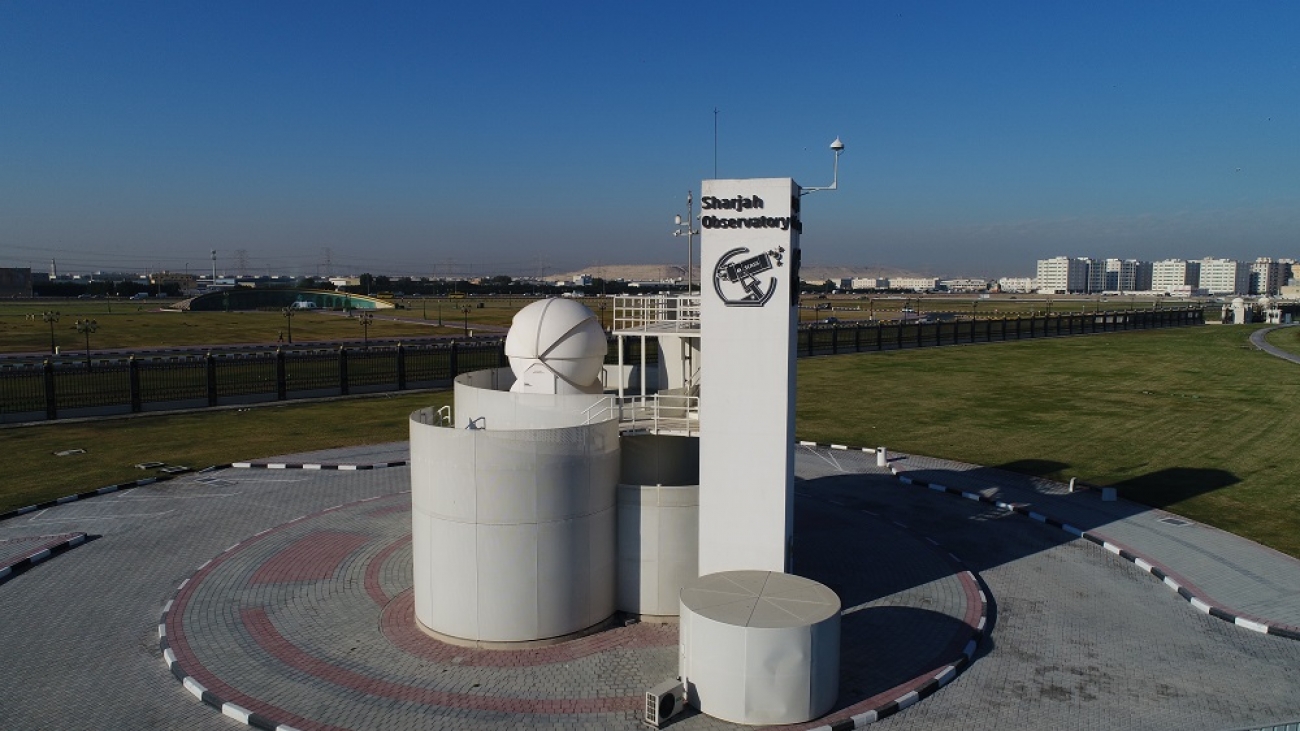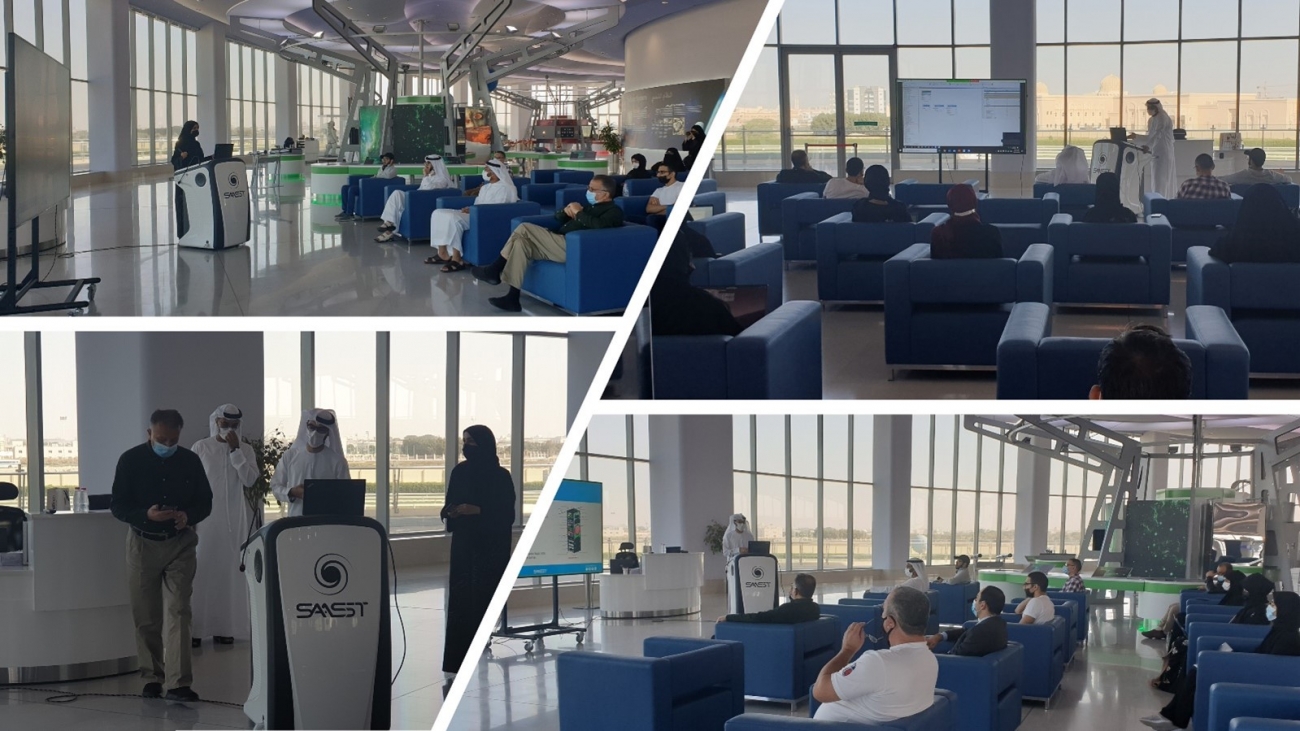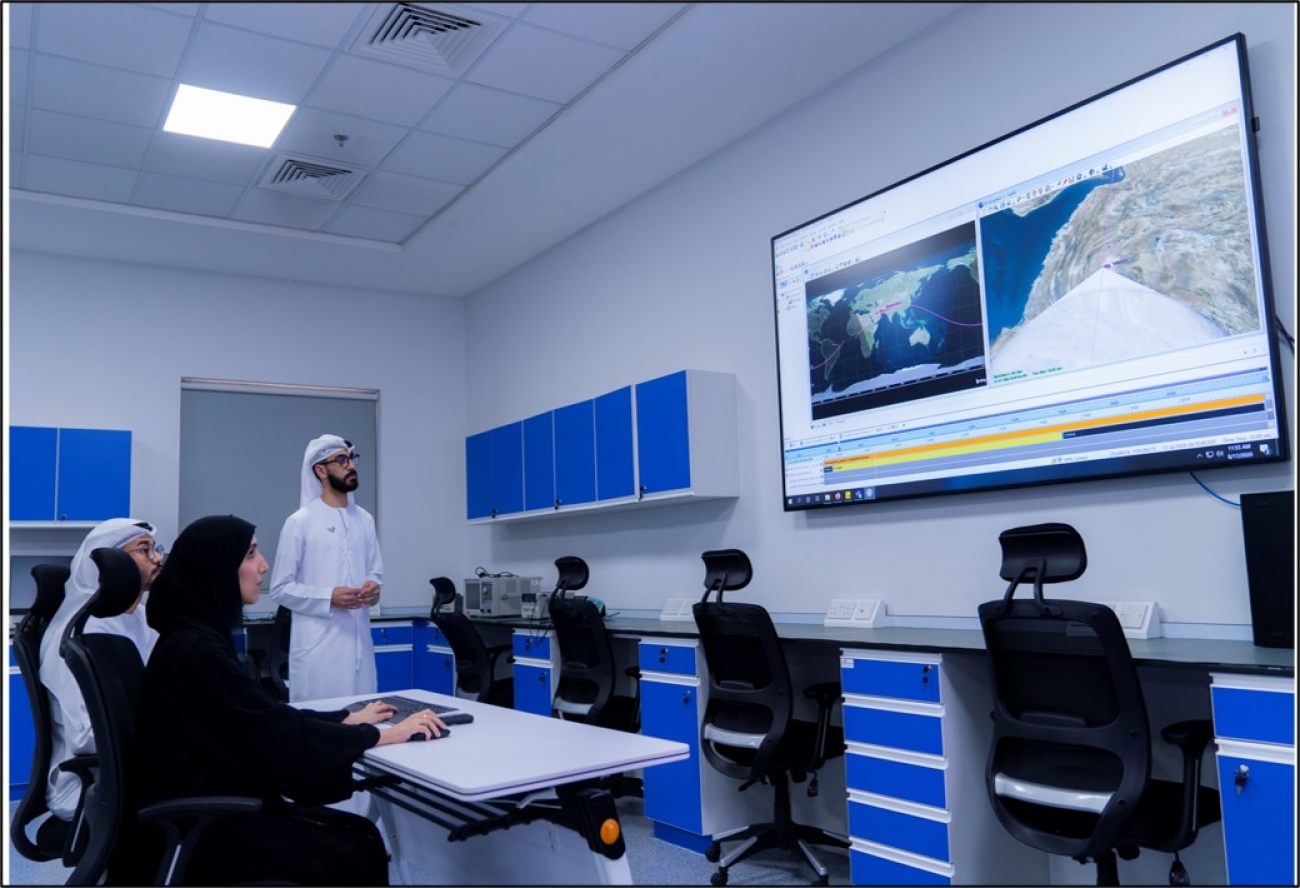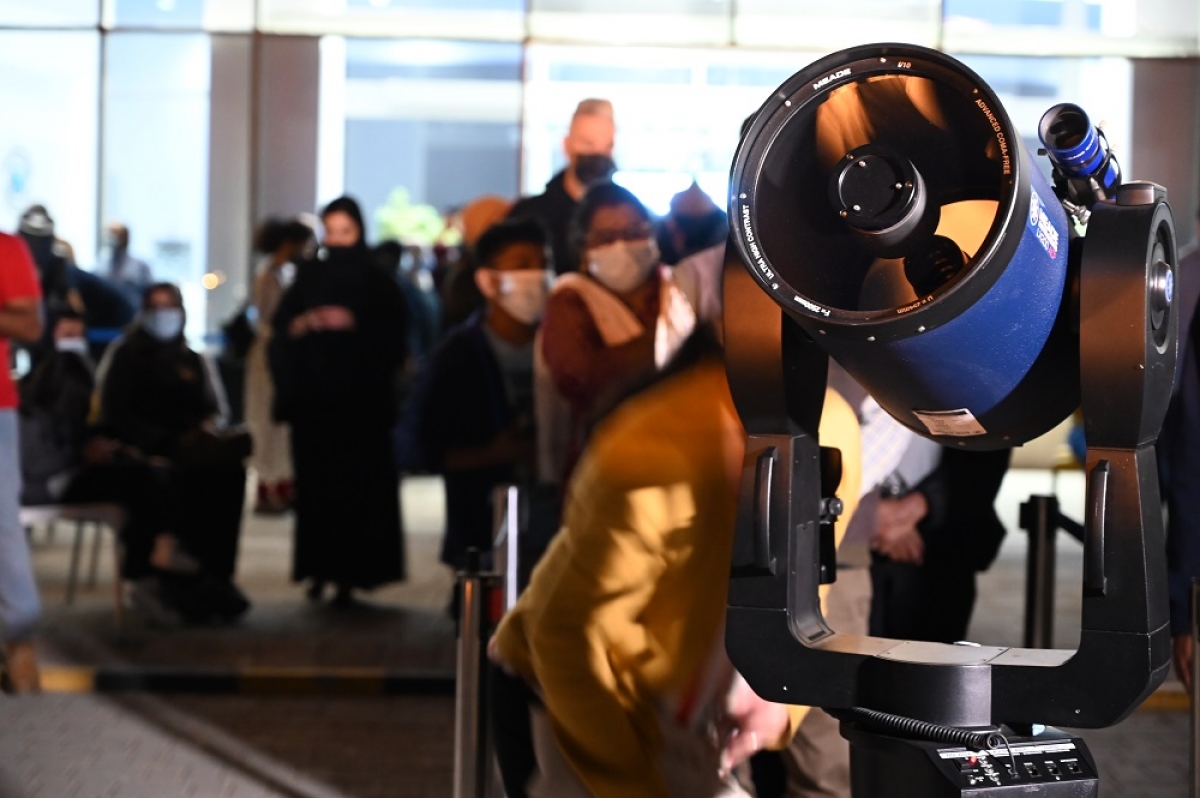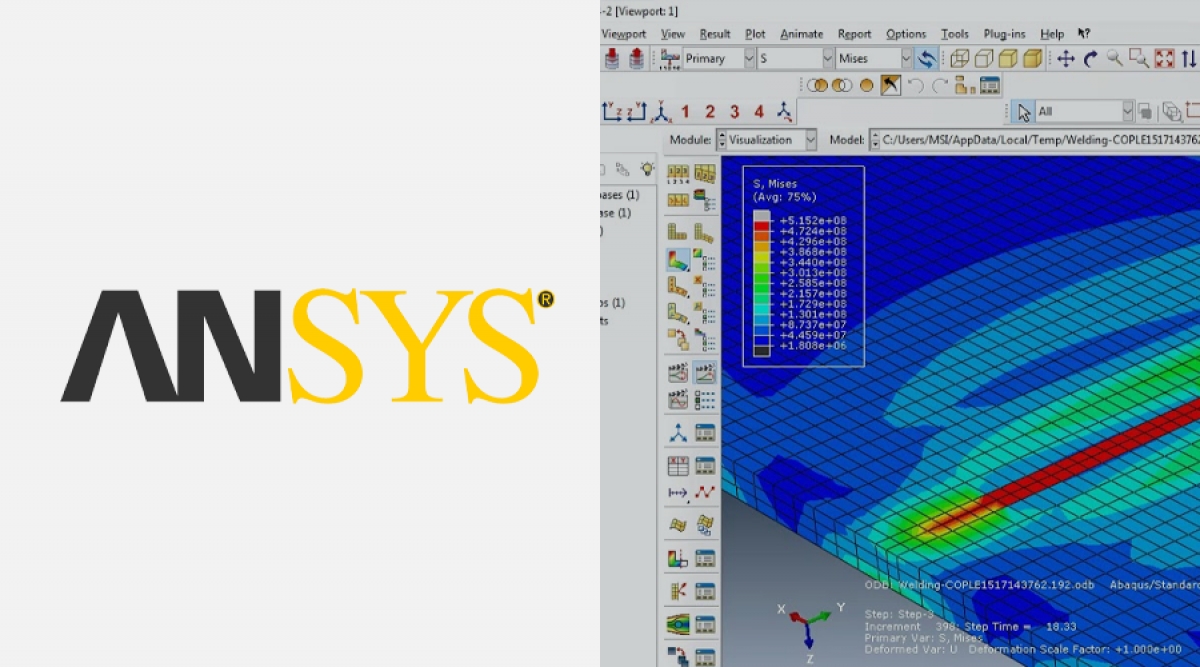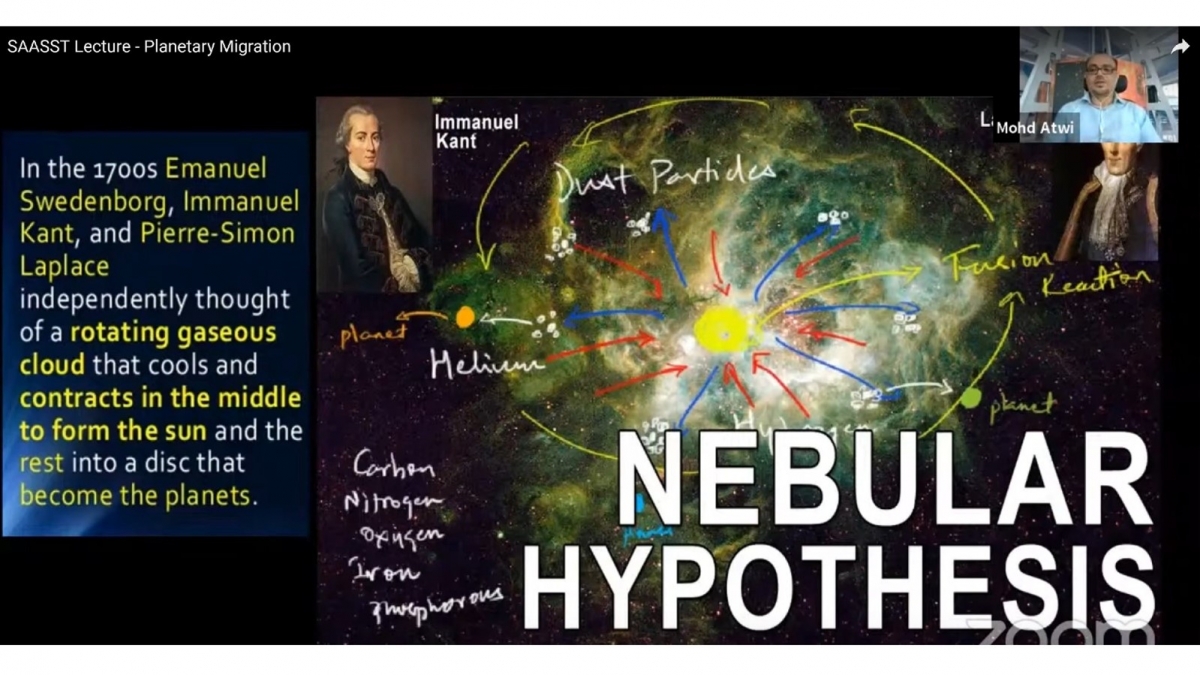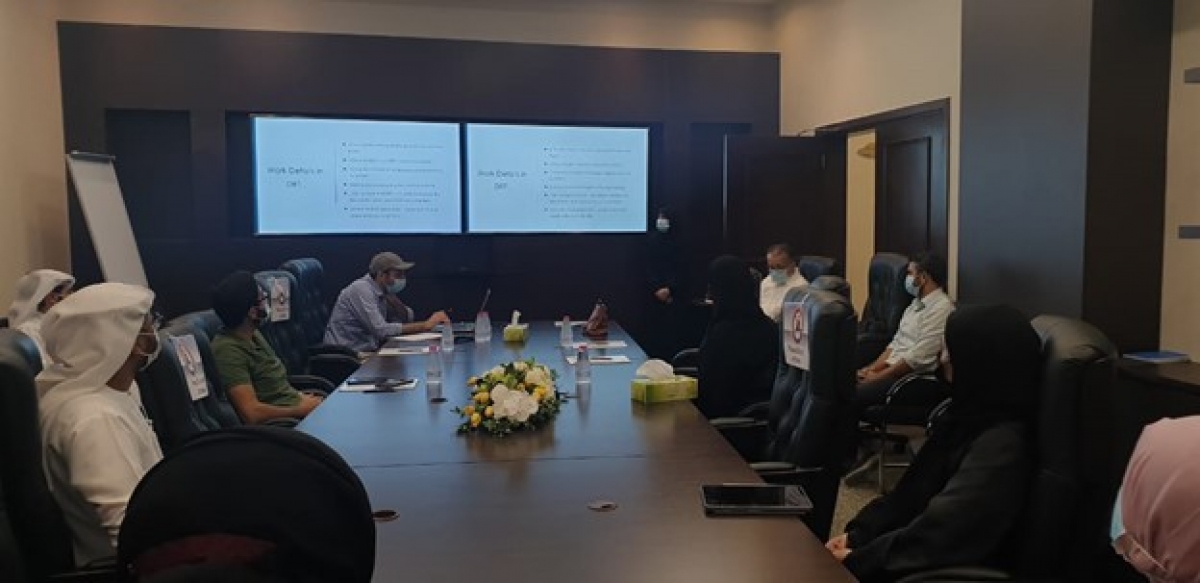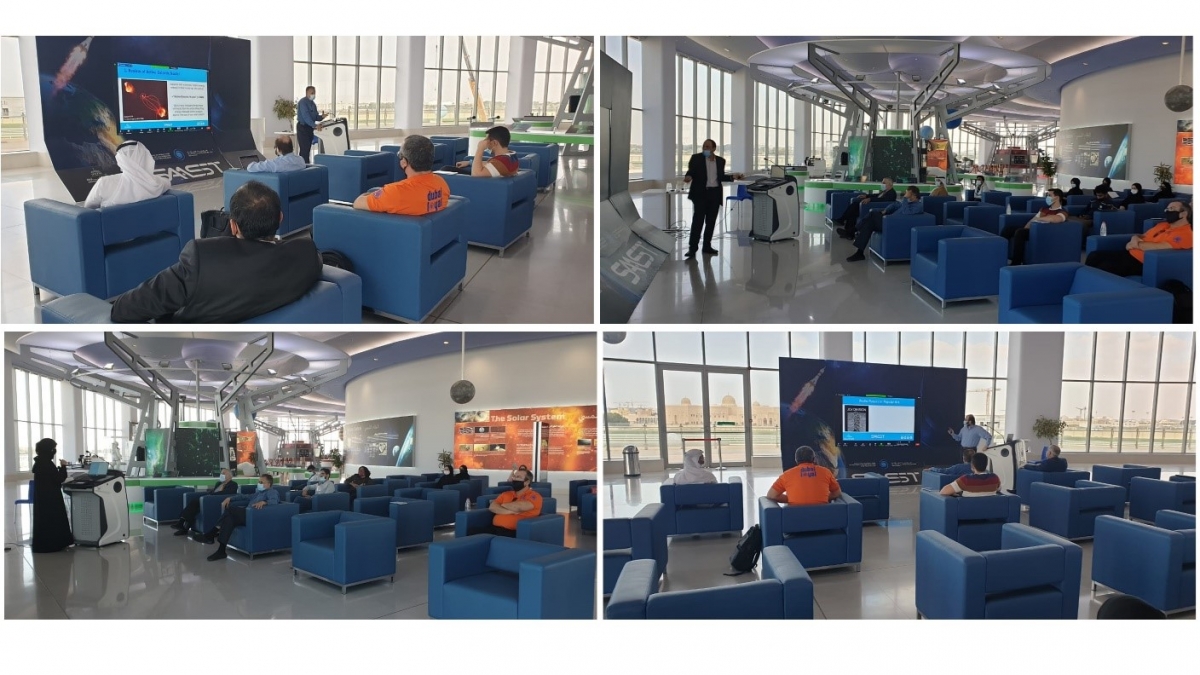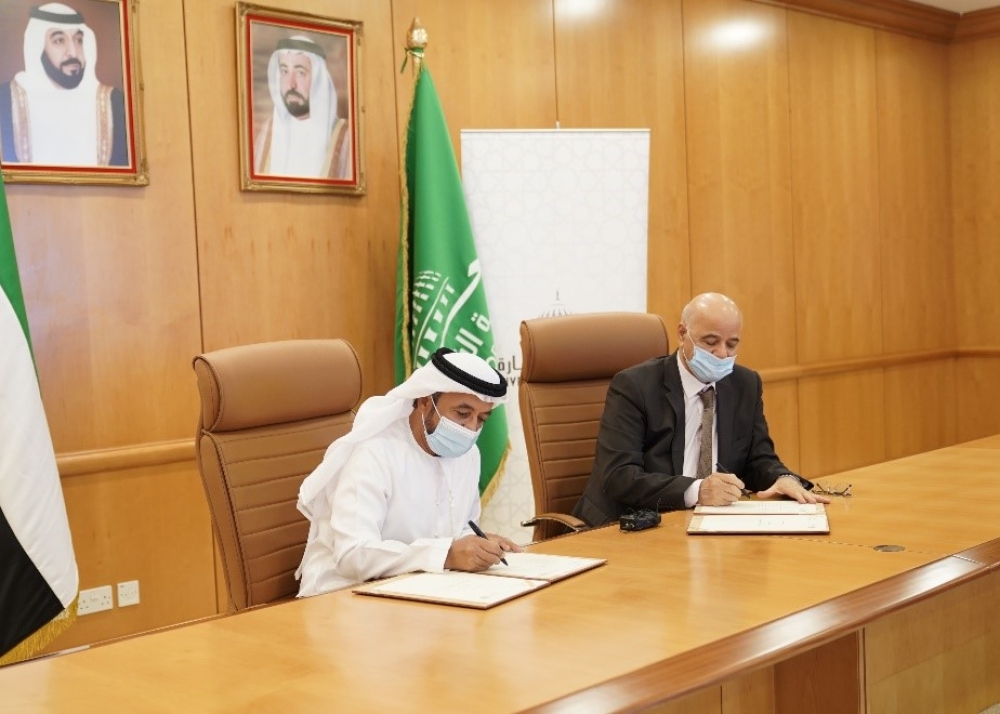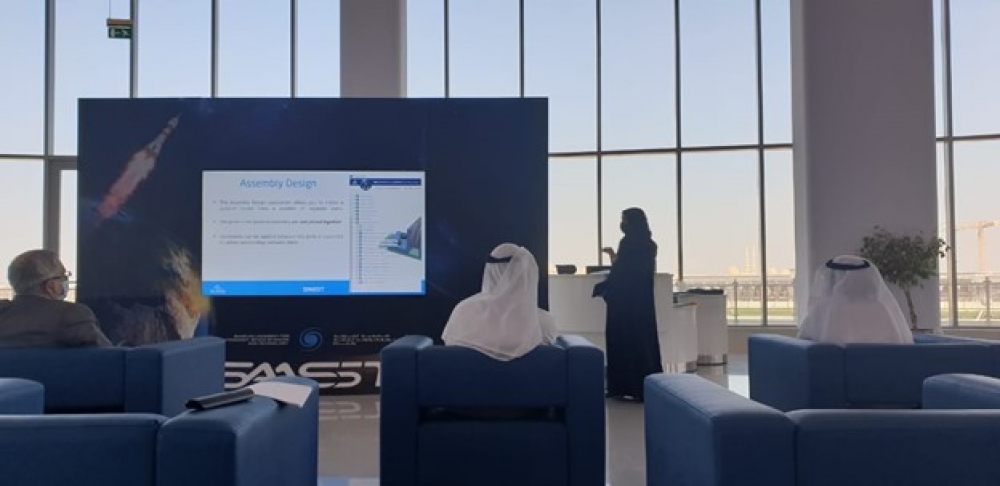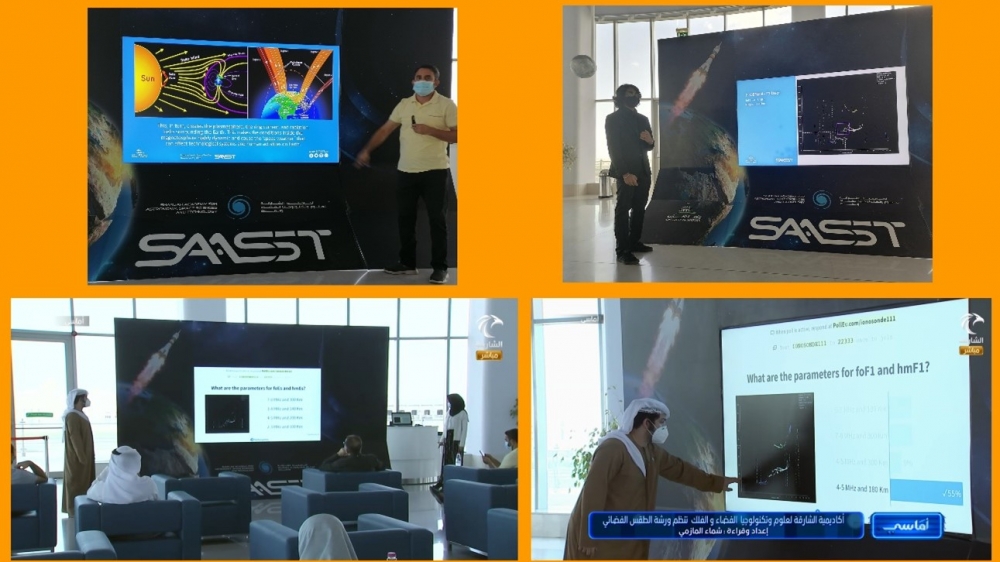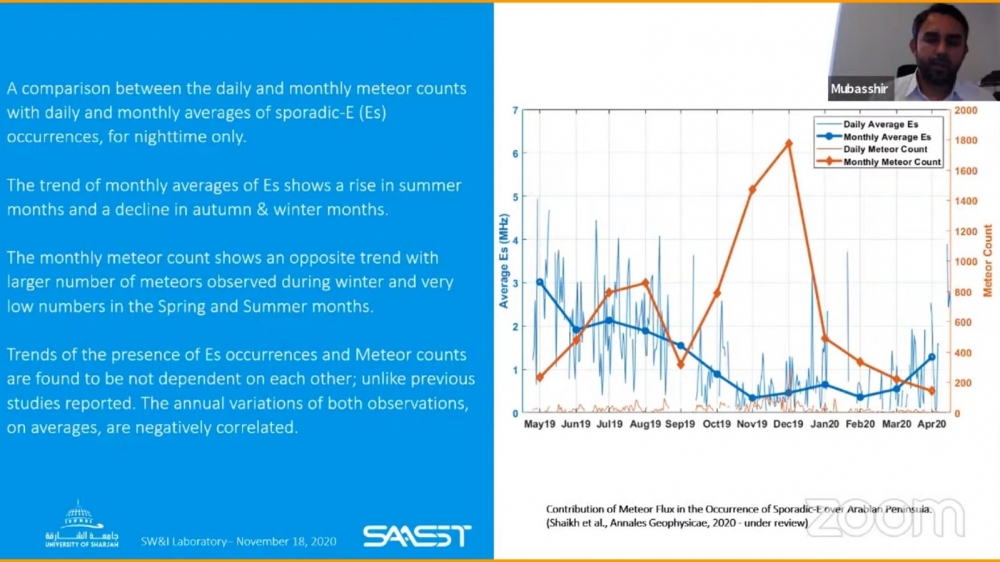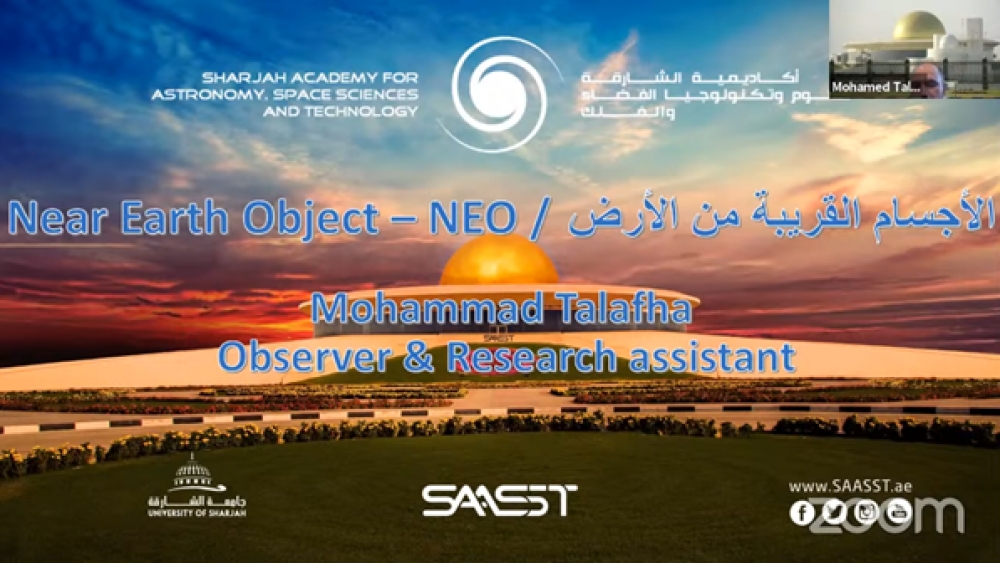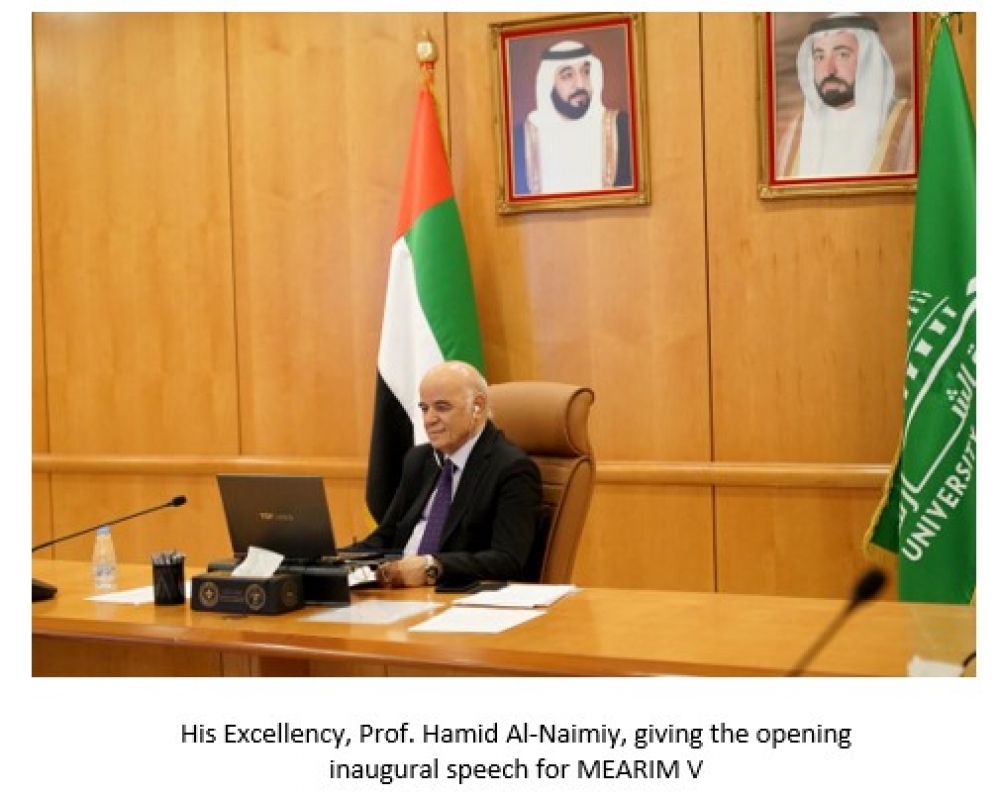
SAASST News (414)
The Effect of Foggy Nights on the UAE Meteor Monitoring Network in January 2021
The UAE Meteor Monitoring Network started the year 2021 with a low-to-moderate detection number compared to the previous two years. The Sharjah tower observed 106 meteors, Al-Yahar 174, and Liwa 254, leading to 534 meteor detections for the whole month of January 2021.
Sharjah Decametric Radio Telescope A Lecture by Mr. Mohamed Rihan
As part of its program to enhance astronomy education, the Sharjah Academy for Astronomy, Space Sciences, and Technology organized a special lecture on the “Sharjah Decametric Radio Telescope” on Jan. 27, 2021. The lecture was given by Mr. Mohamed Rihan, a research assistant at the “Radio Astronomy Laboratory”. The lecturer presented the importance of the decametric astronomical observations conducted worldwide.
The First of its Kind … a Scientific Study Reveals Contradictions in some of Gaia Space Telescope Data
In a valuable addition to the progress of the Sharjah Academy for Astronomy, Space Sciences and Technology (SAASST) at the University of Sharjah in enhancing scientific and research capabilities. A research team published an important scientific study focuses on the data of the Space Telescope Gaia. The study shows a contradiction between the observations of Gaia and Hipparcos space telescopes. It also shows an error in Gaia’s results related to binary stellar distance measurements (parallaxes), which in its turn affect the accuracy of scientific studies and research in this field. Techniques developed at SAASST were used in studying and discovering these contradictions.
The Sharjah Astronomical Observatory Detects Rare Sequential Lunar Impacts
President of the Arab Union for Astronomy and Space Sciences:
The Sharjah Astronomical Observatory Achievements solidify the Sharjah Academy's position for Astronomy, Space Sciences, and Technology at the University of Sharjah as a vital player in developing the UAE space sector. These achievements emphasize its role in supporting the global scientific and research fields.
Sharjah Optical Observatory A Lecture by Mr. Mohamed Talafha
As part of its program to enhance astronomy education, the Sharjah Academy for Astronomy, Space Sciences, and Technology organized a special lecture on the “Sharjah Optical Observatory” on Jan. 25, 2021. The lecture was given by Mr. Mohamed Talafha, the main observer at the Sharjah Optical Astronomy Observatory. Mr. Talafha described the observatory optical system, composed of three main telescopes: a 17-inch reflecting telescope for deep-sky observations, an 18-cm refracting telescopes for the Moon planetary observation, and a 10-cm refracting solar telescope. The observatory has a long schedule of observations of stars systems, exoplanets, asteroids, and extragalactic sources. The observatory has a long story of organizing bi-weekly open houses for the general public to initiate them to the world of astronomy. We hope for these open houses to resume once the pandemic is over.
Machine Learning Applications in Astronomy
As part of its program to enhance astronomy education, the Sharjah Academy for Astronomy, Space Sciences, and Technology organized a special lecture on “Machine Learning Applications in Astronomy” on Jan. 18, 2021. The lecture was given by Ms. Aisha Al-Owais, a research assistant at the Meteorite Center. Data size in astronomy is becoming large and very intricate. The development of data-driven science as a useful companion to the typical model-
The Sharjah Astronomical Observatory Monitors an Exoplanet Similar to Jupiter
The Sharjah Astronomical Observatory at the Sharjah Academy for Astronomy, Space Sciences, and Technology (SAASST) of the University of Sharjah monitored and analyzed the exoplanet (HAT-P-9b) during January 2021. This is part of its periodic observations of this exoplanet that started back in 2018. The results of these observations are published periodically on global websites specialized in this field of astronomical research.
Nobel Prize in Physics. A Lecture by Dr. Antonios Manousakis
Dr. Antonios Manousakis, from the Department of Applied Physics and Astronomy, and a research fellow at the Sharjah Academy for Astronomy, Space Sciences, and Technology, gave a general lecture on "The Nobel Prize in Physics" on Jan. 13, 2021, as part of SAASST biweekly lecture. He pointed out that the Nobel Prizes are a set of five prizes given in the following fields: Physics, Chemistry, Medicine, Literature, and Peace. According to Alfred Nobel's will,
SAASST Solar System Workshop
As part of its program to enhance astronomy education, the Sharjah Academy for Astronomy, Space Sciences, and Technology organized a comprehensive workshop entitled "Solar System" on Jan. 10, 2021. Staff from the research laboratories, the academia, and the planetarium gave several intuitive presentations. The ten lectures covered topics from the solar system's formation to the detection and observations of exoplanets. The
The International Astronomical Union Adds the Sharjah Astronomical Observatory on the Global Observatories Map
Thanks to the continuous unlimited support of His Highness Sheikh Dr. Sultan bin Muhammad Al Qasimi, Supreme Council Member and Ruler of Sharjah and President of the University of Sharjah, and within the framework of its unwavering progress in the global scientific fields, the Sharjah Astronomical Observatory at the Sharjah Academy for Astronomy, Space Sciences, and Technology (SAASST) at the University of Sharjah record a new global achievement. The Minor Planet Center (MPC) of the International Astronomical Union (IAU) added the observatory to its list of credible and reliable international observatories list with the code: Sharjah Observatory M47.
ANSYS Workshop by SAASST CubeSat Research Engineers
The last SAASST workshop of 2020 was conducted on Monday, Dec. 28, 2020, by the CubeSat Laboratory research engineers, Ms. Tarifa Al-Kaabi, Mr. Ibrahim Al-Sabt, and Mohamed Saleh BinAshour. The workshop was on ANSYS, a software package that lets you digitally model real-world phenomena. It uses computer-based numerical techniques to solve physics problems. The range of problems ANSYS can solve is immense and could be anything from fluid flow, heat transfer, stress analysis, and more.
"Sharjah Sat-1" the First Project by the CubeSats Laboratory in the Name of the Emirate of Sharjah
The Sharjah Academy for Astronomy, Space Sciences, and Technology (SAASST) organized an informative lecture related to CubeSat Laboratory entitled "SharjahSat-1". Eng. Mohammed Saleh Bin Ashour, Research Assistant at the Laboratory, gave the lecture. This is within SAASST's series of general lectures for the academic year 2020/2021 to raise public awareness of space sciences and astronomy. These lectures are held on the second and fourth Wednesday
SAASST Organizes a Special Observation of the Great Conjunction between Jupiter and Saturn
The University of Sharjah’s Sharjah Academy for Astronomy, Space Sciences, and Technology (SAASST) organized a special observation of the Great Conjunction of Jupiter and Saturn – the largest two planets in our solar system. It will not be matched in this degree of closeness between both planets before 2080. This was on Monday December 21st, 2020 and started from 5:30pm at SAASST’s headquarters with the attendance of many researchers, students, and astronomy enthusiasts from all segments of the community.
SAASST Organized a Special ANSYS Workshop
The Sharjah Academy for Astronomy, Space Sciences, and Technology has organized a special online ANSYS training for the CubeSat Laboratory team in the week of Dec. 13- 17, 2020. ANSYS is a software package that lets you digitally model real-world phenomena. It uses computer-based numerical techniques to solve physics problems. The range of problems ANSYS can solve is immense and could be anything from fluid flow, heat transfer, stress
Mohamed Tafafha from SAASST Sharjah Optical Observatory and a Former SAASST Research Assistant Discover Three Asteroids
As part of the "Near-Earth Object (NEO)" project group launched by the "Space Generation Advisory Council" (SGAC), Mr. Mohamed Talafha from the Sharjah Academy for Astronomy, Space Sciences, and Technology and his "OSIRIS Team" discovered two asteroids "P119BTs" and "P119UmJ". The team was made of members from Sri Lanka, India, and Jordan. Another team, "Space is Big," of talented students has co-discovered another asteroid, "P119uY1".
Planets Migration by Mr. Mohamed Hani Atwi
The Sharjah Academy for Astronomy, Space Sciences, and Technology (SAASST) has organized on Dec. 09, 2020, its bi-weekly general lecture under the title “Planetary Migration”. The virtual lecture was given by Mr. Mohamed Hani Atwi, one of the SAASST planetarium scientific guide. Planetary migration happens when a planet alters its orbital parameters when it intereacts with a disk of gas that made the star and its planets. This mechanism is used to explain hot Jupiters, these so-called exoplanets with Jovian masses that have very close orbits to their respective stars. Following the theory of planet formation, these planets cannot form so close. Planetary migration has been used to explain them.
SAASST Internship Program (25/8/2020 to 19/11/2020)
Ms. Huda Adnan Abdullah Eisa al Ali, an Electrical Engineering student from the Higher College of Technology, has just finished her internship program (Aug. 25 – Nov. 11, 2020) at the Sharjah Academy for Astronomy, Space Sciences, and Technology. Her internship was in the Radio Astronomy Laboratory under Mr. Mohamed Rihan (Decametric Radio Telescope Manager) and Ms. Asmaa Al-Hameed (40-m Radio Interferometer Manager). The student was initiated to SAASST’s radio astronomy program through its two main instruments. Ms. Huda demonstrated a good amount of knowledge in engineering topics and programming skills. On Nov. 19, she presented a short presentation about her internship at the academy.
Radio Astronomy Workshop
The Sharjah Academy for Astronomy, Space Sciences, and Technology has organized a special "Radio Astronomy Workshop" on Nov. 25, 2020. The workshop consisted of 6 activities, as described in the program below:
More...
SAASST Signs an MoU with the Sharjah Educational Council
His Excellency Prof. Hamid Al-Naimiy, the Chancellor of the University of Sharjah, and the General Director of the Sharjah Academy for Astronomy, Space Sciences, and Technology, signed on Nov. 23, 2020, an MoU with the Sharjah Educational Council to enhance space sciences education among the high school students and broaden educational cooperation between the two institutions. The Chairman of the Sharjah Education Council, His Excellency Dr. Saeed Musabeh Alkaabi, emphasized the importance of this cooperation in light of the University of Sharjah and SAASST being leaders in space sciences technologies. SAASST has a dedicated program with the Sharjah Educational Council through several activities, i.e., space camps, lectures, and onsite activities within the planetarium unit and the research laboratories.
3DExperience CATIA Workshop
The Sharjah Academy for Astronomy, Space Sciences, and Technology has organized a special “3DExperience CATIA Workshop” on Nov. 22, 2020. The workshop was part of the CubeSat Laboratory activities and was conducted by Mrs. Tarifa Al-Kaabi, a research engineer at SAASST. Researchers and engineering students attended the workshop to learn more about the specialized CATIA software.
SAASST Space Weather Workshop
The Sharjah Academy for Astronomy, Space Sciences, and Technology has organized a special "Space Weather Workshop" on Nov. 19, 2020. The workshop consisted of 6 activities, as described in the program below:
Lecture: Space Weather and Ionospheric Lab
As part of its Wednesday's lecture, the Sharjah Academy for Astronomy, Space Sciences, and Technology organized a special lecture on the academy "Space Weather and Ionospheric Laboratory." The lecture was given by Dr. Mubasshir Shaikh, the laboratory's principal supervisor. Dr. Mubasshir gave an overview of the main lab research themes and the main instruments. As he emphasized, Space Weather is becoming a primary concern for today's applications in space communication, Earth's environment, and the Sun’s sunspots predictions. All that happens on Earth is directly related to the Sun. This is why it is essential to know how the Sun’s solar wind affects our planet, and how it affects the ionosphere, the front layer of our atmosphere. Earth has seen so many geomagnetic storms, and the worst one happened in 1859, where a flash of light was seen on the Sun’s surface, followed days later by a response from Earth’s magnetic field resulting in the larget geoeffective solar storm ever recorded. Auroras as bright as day were observed in the Rocky Mountains, Panama / Caribbean Islands, and telegraphs (long conductors, subject to induced currents) caught fire and started to operate without batteries. Such a geomagnetic storm will be catastrophic today and will cost trillions of dollars as damages.
SAASST NEO Lecture
The Sharjah Academy for Astronomy, Space Sciences, and Technology organized on Nov. 11, 2020, its bi-weekly lecture on NEO. The lecture was given by Mr. Mohamed Talafha, SAASST research assistant at the Sharjah Optical Observatory. Mr. Talafha gave an introduction to near-Earth-objects, their classification, and the different methods of observations. Few worldwide observatories are dedicated to such NEO observations to the difficulty of detecting them because of their small sizes.
MEARIM V
The fifth Middle-East and Africa Regional IAU Meeting (MEARIM V 2020) was jointly hosted by The Regional Center for Space Science and Technology Education for Western Asia / United Nations, and Arab Union for Astronomy and Space Sciences (AUASS) and was conducted from November 10, 2020, to November 12, 2020, in Amman, Jordan. In light of the continued impact of COVID-19, the meeting was held through the virtual platform of the RCSSTE-WA using the ZOOM app. With the theme of “Astronomy education and research for future generations.”



